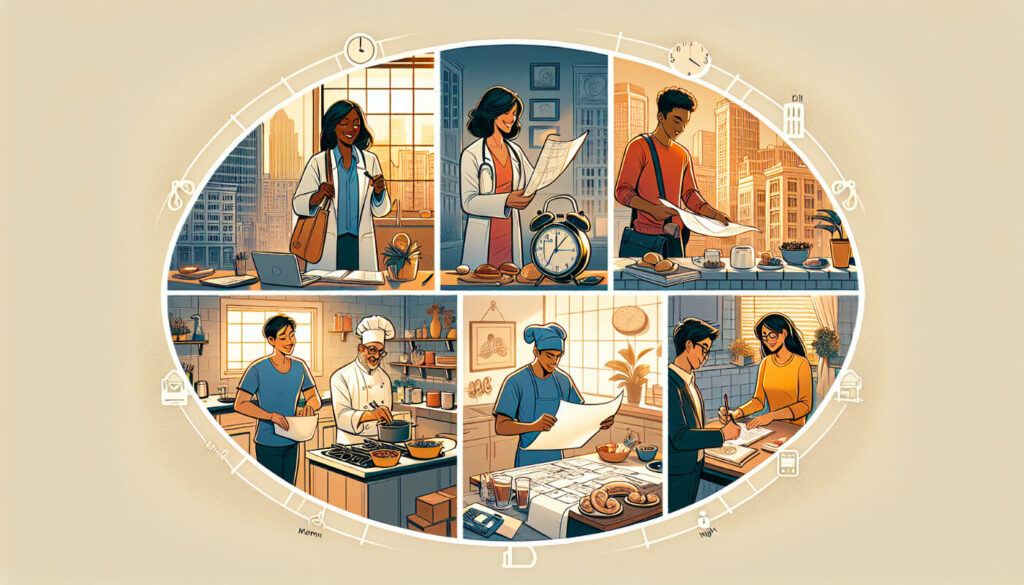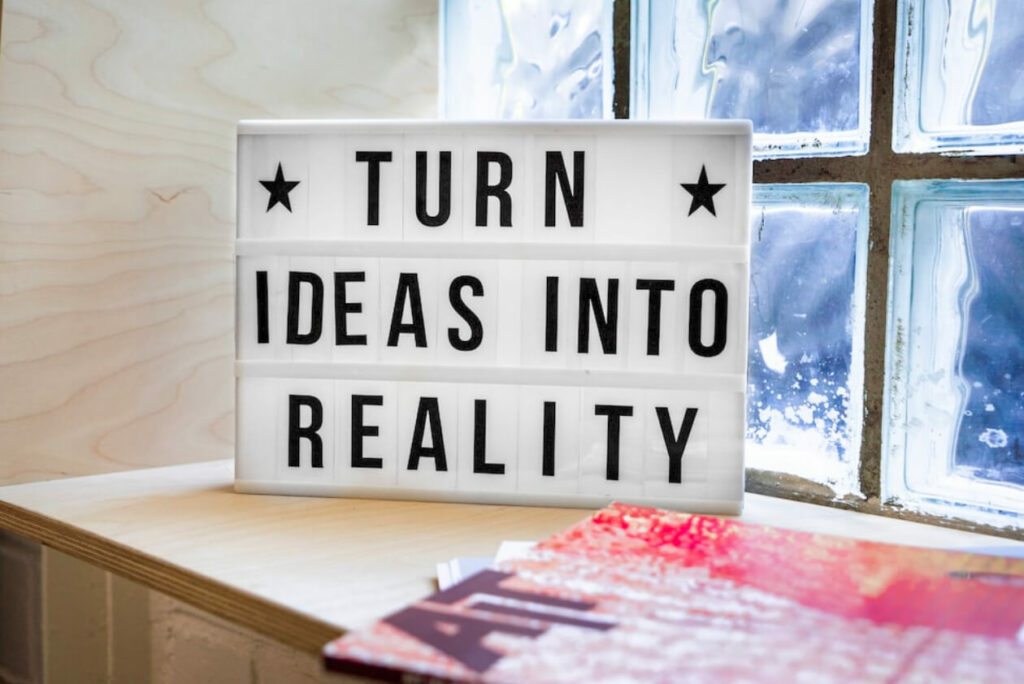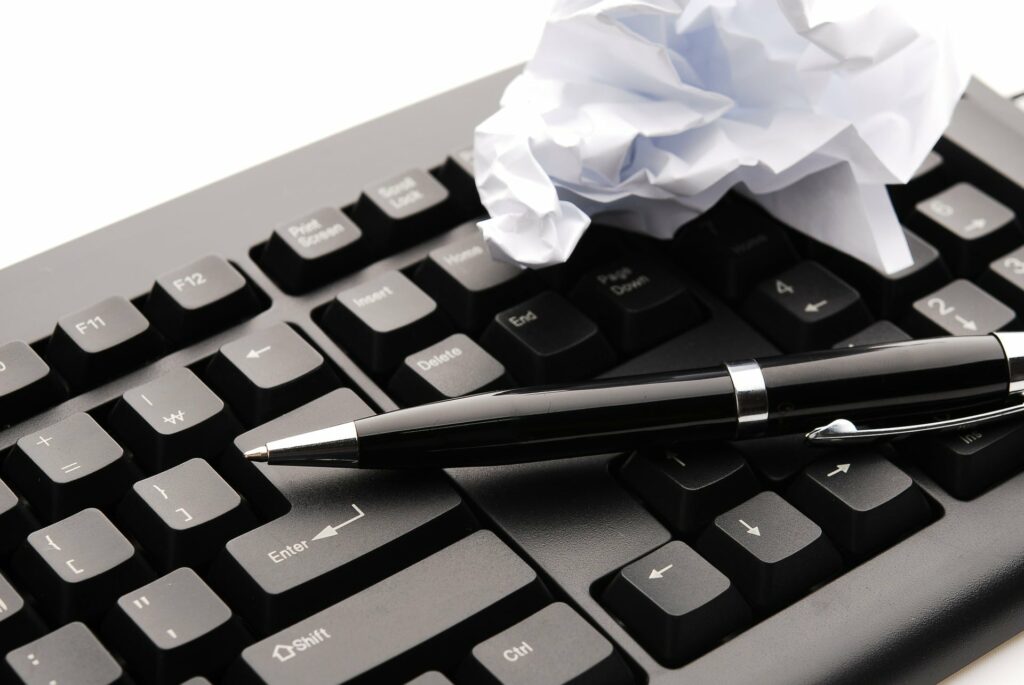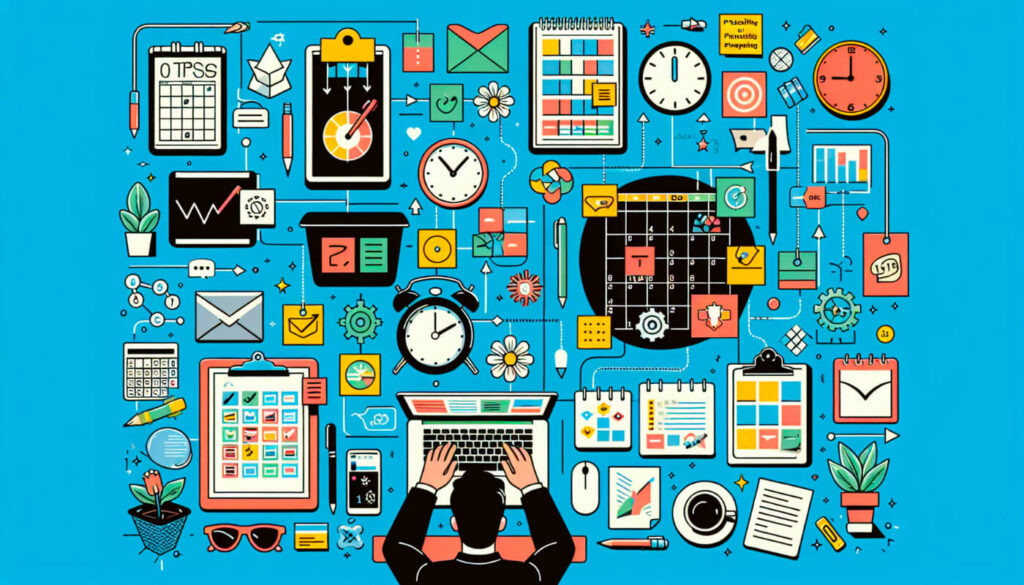How to Get Organized: Key Tips & Strategies for 2024

Estimated reading time: 15 minutes
As we enter 2024, the quest for efficiency and clarity in our personal and professional lives continues to be more crucial than ever. In a world where challenges constantly emerge, organization isn’t just a skill but a necessity.
Interested in how to become more organized? Well, you’re in luck! We’re going to explore the best tips and strategies to help you master the art of good organization. From innovative tools to timeless techniques, prepare to transform your routine and unlock a more productive, stress-free version of yourself.
Table of contents
- Evaluate Last Year’s System
- Identify Your Pain Points
- 1. Setting Clear Goals
- 2. Create a To-Do List
- 3. Decluttering Your Space
- 4. Time Management Techniques
- 5. Digital Organization
- 6. Developing Daily Routines
- 7. Fixed Location for Items
- 8. Financial Organization
- 9. Staying Motivated and Overcoming Setbacks
- 10. Know When to Ask for Help
- 11. Tools and Supplies: Work Faster and Get Organized
- Final Thought
Evaluate Last Year’s System
Before you start with the process of organizing, it’s a good idea to pause and reflect on your experiences from the past year. Take some time to assess what strategies or techniques worked well for you and what didn’t. This self-reflection will help you identify areas that need improvement and clearly understand where to focus your energy moving forward.
Identify Your Pain Points
Organizational skills are essential to leading a productive and stress-free life. However, staying organized can be challenging for many people, and identifying the pain points contributing to disorganization is crucial to finding practical solutions.
Once you understand the specific areas where you struggle with organization (at work or home), you can develop targeted strategies that address your needs. This could involve identifying the types of items that tend to accumulate and cause clutter, pinpointing specific times of the day or week when you get overwhelmed, or recognizing patterns of behavior that lead to disorganization.
Learning from past mistakes can be hard to evaluate, but developing effective organizational strategies is critical. By analyzing why previous attempts have failed, you can identify the barriers that prevent you from staying organized and generate solutions that address those barriers directly.
Wouldn’t preventing recurring issues and creating a more efficient, stress-free environment be great? This self-awareness can also enhance your overall productivity and well-being by freeing up mental and physical space to focus on the things that matter most to you.
1. Setting Clear Goals
Goal-setting plays a crucial role, providing a clear roadmap to follow as you work towards your objectives. By defining, prioritizing, and tracking your goals, you can ensure that your efforts align with your desired outcomes. To assist in the streamlined process, utilize project management tools like Leantime.
Read More: How to Prioritize Tasks When Everything Feels Important
Begin by identifying your short-term and long-term goals, making sure they are specific, measurable, achievable, relevant, and time-bound (SMART). Prioritize these goals by determining which ones are most important to you and your organization. This can help you focus your energy and resources more effectively.
“Setting goals is the first step into turning the invisible into the visible”
Tony Robbins
Tracking your progress is important to not only stay organized but also to be motivated. Regularly assess your accomplishments and setbacks, adjusting your strategies as needed. This will help you stay on track and make informed decisions about your priorities and resources.
Luckily, there a project management tools like Leantime that can be helpful to keep your goals organized and visible. Features offered include task management, time tracking, and progress reports.
Statistic: More than 1,000 studies have shown that setting specific and challenging goals leads to better task performance, motivation, and persistence in comparison to vague goals. [1]
Setting clear goals is a key aspect of staying organized in 2024. It can be challenging, but by defining, prioritizing, and tracking your objectives, you can ensure that your efforts are focused and effective, making work 100% easier to navigate.
Utilizing project management tools can further streamline this process, helping you stay organized and achieve your goals.
2. Create a To-Do List
Everyone knows to-do lists are the way to go! You might stick to good old sticky notes or perhaps go digital with a productivity app. Jotting down your tasks helps you see everything clearly and lets you figure out what needs your attention first.
Why not plan your day by scheduling each task? It keeps you on track and fights off that sneaky procrastination, ensuring you really get things done.
For someone with ADHD, setting reminders on your phone can be a real game-changer. It’s like having a buddy who gently nudges you so you don’t have to keep everything in your head. It helps keep track of all those appointments and small tasks without the extra stress of remembering every little detail.
Tip: Using a Kanban board is a highly effective task management tool that lets you visually organize your to-do list. This is achieved by categorizing tasks into different columns (can use color code) such as “To Do,” “In Progress,” and “Completed.”
Unlike a traditional to-do list, Kanban boards provide a clear overview of your workload at a glance, which helps you prioritize your tasks based on their importance and urgency. Additionally, using a Kanban board facilitates easy tracking of your progress, which is crucial for ensuring that you are on track to meet your goals.
By encouraging continuous flow and efficiency in managing tasks, they have become a popular tool for becoming organized at home or work
If you prefer writing things down, a planner can be your go-to for keeping tabs on important tasks. But if you’re all about that digital convenience, then keeping a list on your phone, tablet, or laptop might be your perfect match.

3. Decluttering Your Space
A clean and organized environment offers numerous benefits, including increased productivity, reduced stress, and greater well-being. To help maintain order in your workspace and home, follow this step-by-step guide to decluttering and keeping things tidy throughout the year.
Start by assessing your space and identifying items that are no longer needed or that can be stored elsewhere. This may include old documents, unnecessary equipment, and miscellaneous clutter. As you sort through your belongings, consider donating, recycling, or discarding items that no longer serve a purpose.
Next, arrange your remaining items in a logical and efficient manner. This could involve organizing your desk, arranging shelves and cabinets, or creating designated storage areas for specific items. Consider using labeled containers or storage systems to help keep things organized and easily accessible.
Read More: ADHD Workplace Accommodations
Once you’ve decluttered your space, it’s essential to maintain order by incorporating regular decluttering sessions into your schedule. Depending on your needs and preferences, this could be a weekly or monthly task.
During these sessions, take the time to assess your space, remove any clutter that has accumulated, and ensure that everything is in its proper place.
Did You Know: Research has shown that having a messy workspace can reduce productivity. In fact, 40% of employees admit that an untidy workspace makes it harder to focus and work efficiently.
Develop a Decluttering Schedule
With all the benefits, who wouldn’t want to keep your workspace clean? One way to do this is by creating a weekly schedule to clean your workspace is vital for several compelling reasons. First and foremost, a tidy and organized space can significantly reduce distractions, allowing for greater focus and efficiency.
Clutter is not just physical; it can also be mental, leading to increased stress and reduced productivity. I make sure I spend an hour each weekend focussing on cleaning the area. This includes organizing my notebooks, post-it notes, loose papers, and my desk from any unwanted items such as candy wrappers or other items.
Research has revealed that individuals typically spend around 4.3 hours weekly looking for papers in a disorganized area. On the other hand, a tidy desk allows one to concentrate for an additional 7.5 minutes without distraction. Furthermore, it’s thought that a neat workspace boosts employee motivation by 84%. [2]
Setting a regular schedule to organize and declutter means maintaining a conducive work environment and instilling a sense of discipline and order into your daily schedule. This proactive approach ensures that clutter doesn’t accumulate, making finding and managing resources and tasks easier. Ultimately, a decluttering schedule creates a harmonious space that fosters clarity, creativity, and productivity.
Remember to keep in mind a decluttered workspace has various benefits, emphasizing its importance for mental health, productivity, and overall well-being.
Need Extra Storage Space?
Some effective storage solutions for home or work include shelving units for vertical space utilization, drawer dividers for organizing small items neatly, and storage bins or baskets for categorizing and hiding clutter.

4. Time Management Techniques
Effective time management is critical to staying organized, allowing you to work more efficiently and make the most of your day.
Did you know that there are several popular methods that can help you stay organized and on track? Some well-known techniques include the Pomodoro Technique, time blocking, and the Eisenhower Matrix. Each method has advantages, and finding one that aligns with your work style and goals is best.
If you’re not sure which one is best for you, below is a brief explanation of each technique. If you haven’t tried any of them, you’ll be amazed at the benefits of each.
Pomodoro Technique
If you prefer working in timed intervals, the Pomodoro Technique is a great option. This method uses a timer to break important work into intervals, traditionally 25 minutes in length, separated by short breaks to boost productivity and focus.
Time Blocking
Time Blocking is a productivity technique where you divide your day into blocks of time, each dedicated to accomplishing specific important tasks or groups of small tasks, to focus better and manage your time more efficiently.
The Eisenhower Matrix
It’s a decision-making tool that helps prioritize tasks by categorizing them into four quadrants based on urgency and importance, aiding in better time and task management.
To find one that specifically works for you, consider your priorities, work habits, and any specific challenges you face in managing your time. This may involve experimenting with different techniques, combining elements from various methods, or tweaking an existing system to better suit your needs.
Utilizing tools and apps like Leantime can greatly enhance your efforts. With features such as task management, time tracking, and progress reports, it can help you stay organized, prioritize daily tasks, and monitor your progress toward your goals.
By leveraging these tools, you can optimize your time to help you stay organized in 2024 and beyond.
5. Digital Organization
Being organized is not limited to just physical spaces, it also applies to our digital lives. Organizing digital files, emails, and cloud storage can significantly improve productivity while it can help reduce stress.
Study: According to an article, approximately 92% of employees experience elevated blood pressure and heart rate while handling work emails, with unread emails serving as a significant stressor. [3]
To get started, begin by assessing your digital landscape and identifying areas that need structure, such as your email inbox, computer files, and cloud storage.
Generate a system for organizing these areas, utilizing folders, tags, and labels to keep items easily accessible and logically grouped. For instance, you can create folders for different projects, clients, or categories within your email and computer file systems.
Reducing digital clutter is another essential aspect. Regularly delete or archive unnecessary emails, all your files, and documents to keep your digital spaces clean and functional.
Try to create a routine for maintaining digital structure, such as a weekly or monthly cleanup session, as this can help tremendously to ensure your digital environment remains clutter-free.

6. Developing Daily Routines
Creating daily routines is crucial for maintaining order and enhancing productivity. By crafting and adhering to a daily routine that aligns with your goals and priorities, you can create a sense of structure and predictability in your life, which can help you stay organized and focused on your objectives.
To create an effective daily routine, identify your key priorities and tasks you need to complete regularly. This may include work responsibilities, personal commitments, and self-care activities. Once you clearly understand your priorities, arrange your tasks logically, considering factors such as energy levels, time constraints, and deadlines.
Consistency is crucial, so make a conscious effort to stick to your schedule as closely as possible. However, it’s a vital part to recognize that circumstances may change, and you may need to adjust your routine accordingly to maintain organization. Regularly review and refine your routine to ensure it continues to align with your goals and priorities.
In conclusion, developing daily routines is vital for staying organized in 2024. By pinpointing your priorities, developing a systematic schedule, and adapting when necessary, you can stay on course, keep everything in order, and reach your objectives.
7. Fixed Location for Items
Having a fixed location for items can significantly help people with ADHD by reducing the cognitive load required to remember where things are, thereby minimizing distractions and decision fatigue, which can lead to a more organized and less stressful environment.
How often have you misplaced your keys, wallet, or phone? I’ve been there countless times. Each time I finally locate them, I’m left wondering, “Why on earth did I leave it there?” The frustration was real. That’s why I’ve now created specific spots for these essential items.
Fun Fact: Over a lifetime, it’s believed that we’ll spend around 3,680 hours looking for things we’ve misplaced.
This simple change has brought a surprising amount of calm and order to my daily routine, and I no longer waste precious minutes searching for misplaced things. Ultimately, this small adjustment has significantly reduced my stress, transforming moments of panic into peace of mind.
8. Financial Organization
Organizing your financial tasks is crucial for maintaining control over your financial well-being and achieving your financial goals. Creating a budget is vital in understanding your income, expenses, and financial priorities, enabling effective resource allocation and informed decisions about spending and saving. Regularly tracking your expenses can help monitor spending patterns and identify potential areas for adjustment.
Planning for the future is another aspect of financial organization that can be a little more challenging for some people. This may involve setting short-term and long-term financial goals, such as saving for a vacation, buying a home, or preparing for retirement. It might not be a fun task, but regularly evaluating your progress toward these goals and making any necessary adjustments to your financial plan can be beneficial.
Consider using budgeting apps, expense-tracking software, or financial planning tools to assist with your financial organization efforts.
Motivation and discipline play a vital role in maintaining financial order. Stay focused on your financial objectives and remind yourself of the benefits of being organized, such as reduced stress, increased savings, and greater financial security.
Take pride in your achievements, celebrate small wins and successes along the way, and remain committed to improving your financial structure in 2024. Examples can include hosting a budget-friendly dinner party after paying off debt, taking a day off to relax or pursue a hobby after reaching a savings goal, or simply treating yourself to a small, meaningful purchase as a reward for sticking to a budget.

9. Staying Motivated and Overcoming Setbacks
Maintaining motivation and concentration is important for staying organized, especially when facing obstacles and setbacks. We’ll look at some techniques for staying motivated, addressing common challenges, and celebrating milestones and achievements to encourage continued organization.
When dealing with setbacks, it’s important to remain resilient and adaptive. Take a moment and step back to identify the root cause of the challenge and develop a plan to address it. Keep in mind that setbacks are a natural part of any journey, and learning from them can help you grow and improve your organizational skills.
Like financial goals, celebrating milestones and successes is important to stay motivated and organized. Take the time to acknowledge and reward yourself for your achievements, which can help reinforce good habits and encourage continued development.
Sharing your accomplishments with others can provide additional motivation and support because you brought it to their attention. They are likely to follow up by asking how you are doing.
10. Know When to Ask for Help
Asking for help when trying to get better organized either from a best friend of family member, can be important because it provides fresh perspectives, new strategies, and emotional support. Others might offer solutions you hadn’t considered, helping you overcome obstacles more efficiently and keeping you motivated throughout the process.
11. Tools and Supplies: Work Faster and Get Organized
In any task, having access to the right set of tools and supplies is crucial to ensure that you can complete it with maximum efficiency and structure. The right tools and supplies can help you streamline processes, reduce unnecessary steps, and ensure that everything you need is always within reach.
Doing so can help you attain a smoother, faster, and more effective workflow, which is vital for any project, no matter how big or small. They can also help you avoid delays and mistakes, which can save you time, money, and effort in the long run. So, whether you’re working on a DIY project, running a business, or pursuing a hobby, having the right tools and supplies can make all the difference in your success.
Leantime: Project Management Tool

Meet Leantime, a work management system tailored to embrace inclusivity, especially for individuals with ADHD, ADD, and dyslexia. It’s packed with features that enhance dopamine and motivation while sporting a design focused on readability.
Whether you’re running a small business, part of a product team, or in a digital consulting agency, Leantime adapts to your unique workflow.
The project management tool can help you stay organized throughout the year by offering structured project management tools, intuitive to-do lists, and time-tracking features, all designed to enhance focus and productivity for various work styles and needs.
Fortunately, several productivity tools help you simplify and streamline work.
Final Thought
Achieving an organized 2024 relies heavily on you and trying new strategies, such as setting clear goals, decluttering your space, mastering time management techniques, optimizing digital structure, developing daily routines, and maintaining financial arrangements.
You can continuously improve your organizational skills throughout the year by staying motivated and overcoming setbacks. Now is the perfect time to implement and refine these tips as needed. Doing so can set you up to feel productive and organized year ahead.
Remember, staying organized is an ongoing process, and with dedication and the right strategies, you can achieve your goals and enjoy the benefits of an organized life in 2024.
Resources
[1] Höpfner, J., & Keith, N. (2021). Goal Missed, Self Hit: Goal-Setting, Goal-Failure, and Their Affective, Motivational, and Behavioral Consequences. Frontiers in Psychology, 12(1). Frontiersin. View Study
[2] Staff Reporter. (2020, April 16). What the Research Says About a Cluttered Desk. Science Times. View Resource
[3] Email stress | 5 facts about email that often cause stress. (2017, January 10). View Resource




